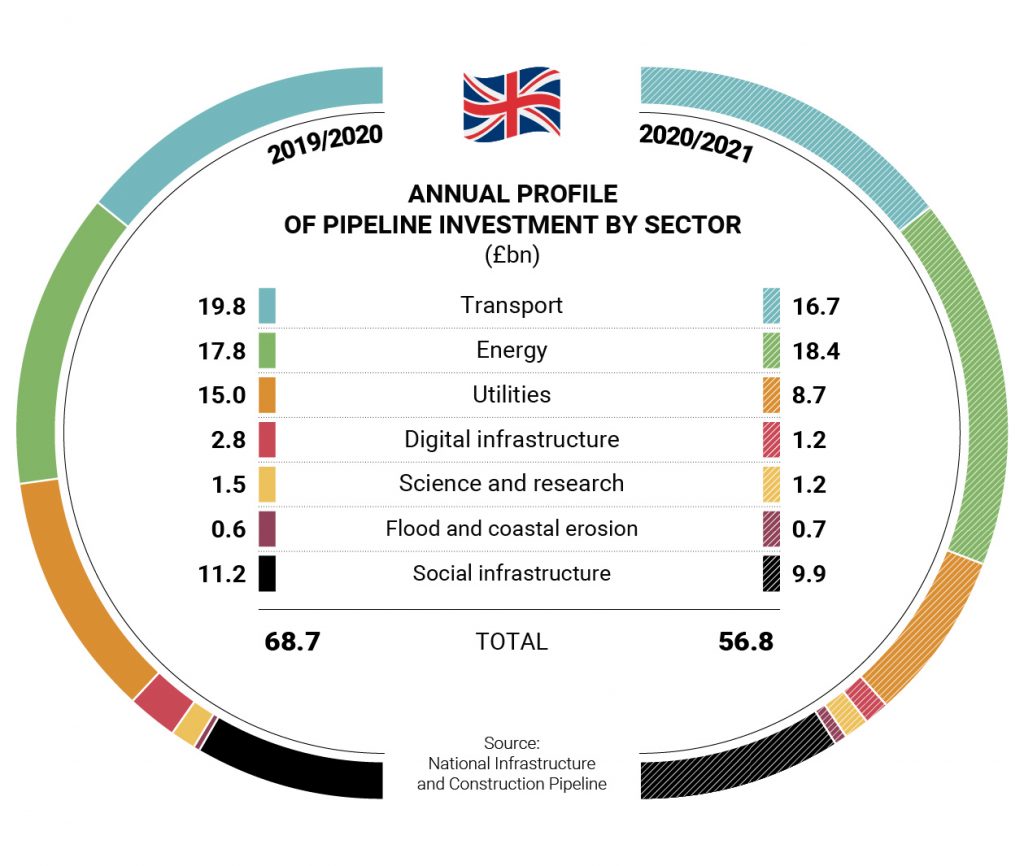
The United Kingdom has in the pipeline for the next 10 years £600 billion ($764 billion) worth of projects to improve its infrastructure in energy, transport and other sectors, with an emphasis on the latest techniques to improve productivity on construction sites.
The government revises the pipeline, formally known as the National Infrastructure and Construction Pipeline, every year to give a progress report of current and upcoming projects. The bulk of the investments – both public and private – are in England, and London in particular. Of the total amount cited, £190 billion is expected to be invested by 2021.
Long term investments and planning
Described by the government as one of the largest investment packages in the history of the country, the pipeline belongs to a wider strategy to help grow the economy and improve people’s lives. It concerns more than 700 projects in a wide range of sectors, according to the Analysis of the National Infrastructure and Construction Pipeline, a document prepared by the Infrastructure and Projects Authority in collaboration with the government.
Some of them are strategic. A fund dedicated to roads, for example, will receive £28 billion to complete iconic projects such as East West Rail, the modernisation of the M6 motorway and Hornsea Project One, which would be the world’s largest offshore wind farm.
«We are committed to renewing our infrastructure to drive growth in all parts of the United Kingdom», said Treasury Secretary Robert Jenrick in a statement about the pipeline, the details of which were presented in November 2018. «Over the course of this parliament, the investment in economic infrastructure will reach the highest sustained levels in over 40 years».
In the transport sector, the government has earmarked £120 billion for 256 projects. A good part of this amount – £50.3 billion – will be to develop high-speed rail, followed by regular train service (£38.8 billion) and local transport (£10.4 billion).

London, a strategic asset for the entire nation
Mobility in London is a top priority, with an investment of £9.8 billion by 2021, mainly for the Crossrail, a high-frequency, high-capacity railway.
Two other projects stand out. There is the “Thames Tideway Scheme,” a hydraulic tunnel under construction that will prevent sewage from being dumped into the Thames River. Then there is the London Power Tunnel, a kind of electricity highway which power lines will run.
The government is pushing for the use of the latest in digital technology to increase productivity, such as the manufacturing of modular components in factories before shipping them to the construction sites. «Applying modern manufacturing approaches to building projects can boost productivity and reduce waste by as much as 90 per cent», read the statement. «A school that typically takes a year to build could be completed in just over four months». One project where this manufacturing technique has been used with success was an A14 viaduct whose parts were developed in a factory, meaning they were built more efficiently than if traditional methods of construction had been used.
«As the pace of technological change accelerates, we are stepping up our commitment to digital infrastructure, use of data to drive greater productivity and embrace new methods of construction», added Jenrick. «With £600 (billion) of investment over the next decade, including the largest ever investment in our strategic road network, we are taking the long term action required to raise productivity and ensure the economy is fit for the future».

